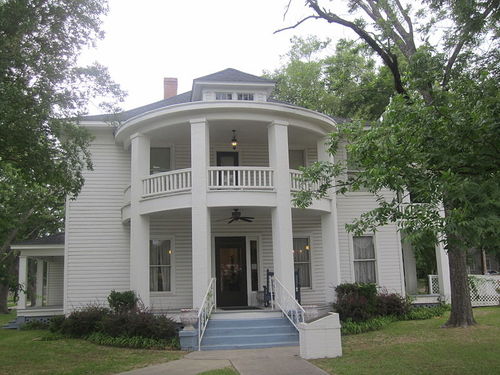.jpg) A Peek into Panola
A Peek into Panola
By Vina Lee
During the American Revolution, the legal separation of the Thirteen Colonies from Great Britain occurred July 2, 1776, when the Second Continental Congress voted to approve a resolution of independence proposed in June by Richard Henry Lee of Virginia declaring the United States independent from Great Britain. After voting for independence, Congress turned its attention to the Declaration of Independence, a statement explaining this decision. It was prepared by a Committee of Five, with Thomas Jefferson as its principal author. Congress debated and revised the wording of the Declaration, finally approving it on July 4, 1776. A day earlier, John Adams had written to his wife Abigail:
The second day of July, 1776, will be the most memorable epoch in the history of America. I am apt to believe that it will be celebrated by succeeding generations as the great anniversary festival. It ought to be commemorated as the day of deliverance, by solemn acts of devotion to God Almighty. It ought to be solemnized with pomp and parade, with shows, games, sports, guns, bells, bonfires, and illuminations, from one end of this continent to the other, from this time forward forever more. (Texas State Historical Association)
Ten years after Panola County had been decreed and Carthage became the official county seat (1846), the Antebellum Texas that had sprung up was so much like the old southern states that by 1861, it was like them socially, economically and politically. Even though they had become part of the union of states united under the flag of the United States of America, battles still ragged and boundary lines were still being fought over with Mexico. The eastern part of Texas was very much like the southern terrain most of the settlers had come from, leaving the western part of Texas still barren of people in its flat terrain. Still, every July fourth demanded a celebration of some sort. About this time in history, a Fourth of July Celebration in Panola County might have happened somewhat like this fictional rendition of early Texas history.
John William and his little sister, Mary Margaret leaned ever so close over the boardwalk's edge that they had to scoot their toes back a bit. Beside them, ten barefoot toes kicked up a bit of dust next to a pair of deer skin moccasins as they scooted. The four children made a straight line as they peered down the street to see the coming parade, ten bare toes, ten moccasin toes, ten toes in white linen shoes with pearl buttons and ten toes covered with waxed black leather shoes. Twenty of these toes weren't supposed to be in this line.
Mary Margaret, just five years old twisted her blue satin bonnet ties as she whispered to her eight year old brother, John William. Little Eliza Bathilda, six and Naduah Kadohadacho, four years old could not hear what she said, but John William told them to quickly hide under the carriage behind the big back wheels where the little girls could see, but not be seen.
Eliza and Naduah were the small children of the household help and bondsmen. The Caddo where in this part of Texas long before the white settlers came bringing their slaves with them and some became nurses to the babies. The children were born together and reared together and played together, but did not travel nor go to town together.
Today, it was different. Today was the fourth of July! Even the babies knew July fourth meant something special. Being born to masters who let them be free, they didn't know for sure why the canons were being shot into the fields or the ranchers were parading through the street shooting their guns, but they knew it was important.
Naduah's brown native dress almost disappeared from view behind the big axles and steel wheel and Eliza's calico looked like little pink flowers. Mary Margaret stood on one side of the wheel and John William stood on the other side. John William, the tallest stretched his neck as far as he could, so he could tell the girls what was going on as the parade Marshall lead the horsemen in uniforms and the Wagon master rode in front of the carriages and covered wagons draped with red, white and blue streamers of rough woven cloth dyed in vats in the back yards and fields.
The hard ground that made the main street had been packed by cattle, horses and wagons as the single horse trails of only a few years ago became wide enough for carts with wheels, then herding cattle and sheep. Most of the folks who came to Carthage and surrounding towns planted cotton though. From John William's vantage point where he had climbed up to stand on top of the carriage wheel, he could see the front porches, posts and pillars of the Antebellum houses with white fields of cotton stretching as far as the horizon behind them and white picket fences lining the street in front of them.
Men, women and the older children ran behind the decorated wagons and carriages with signs and flowing ribbons shouting, "Happy 4th of July!" Church bells rang, whistles blew, tambourines rattled and fiddlers played as they all marched singing, "Glory, Hallaluah!"
